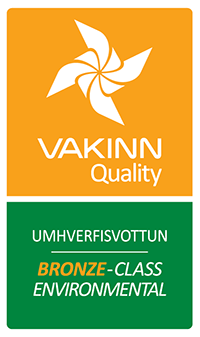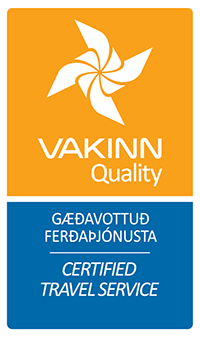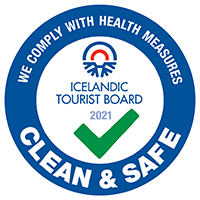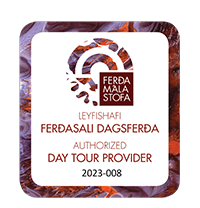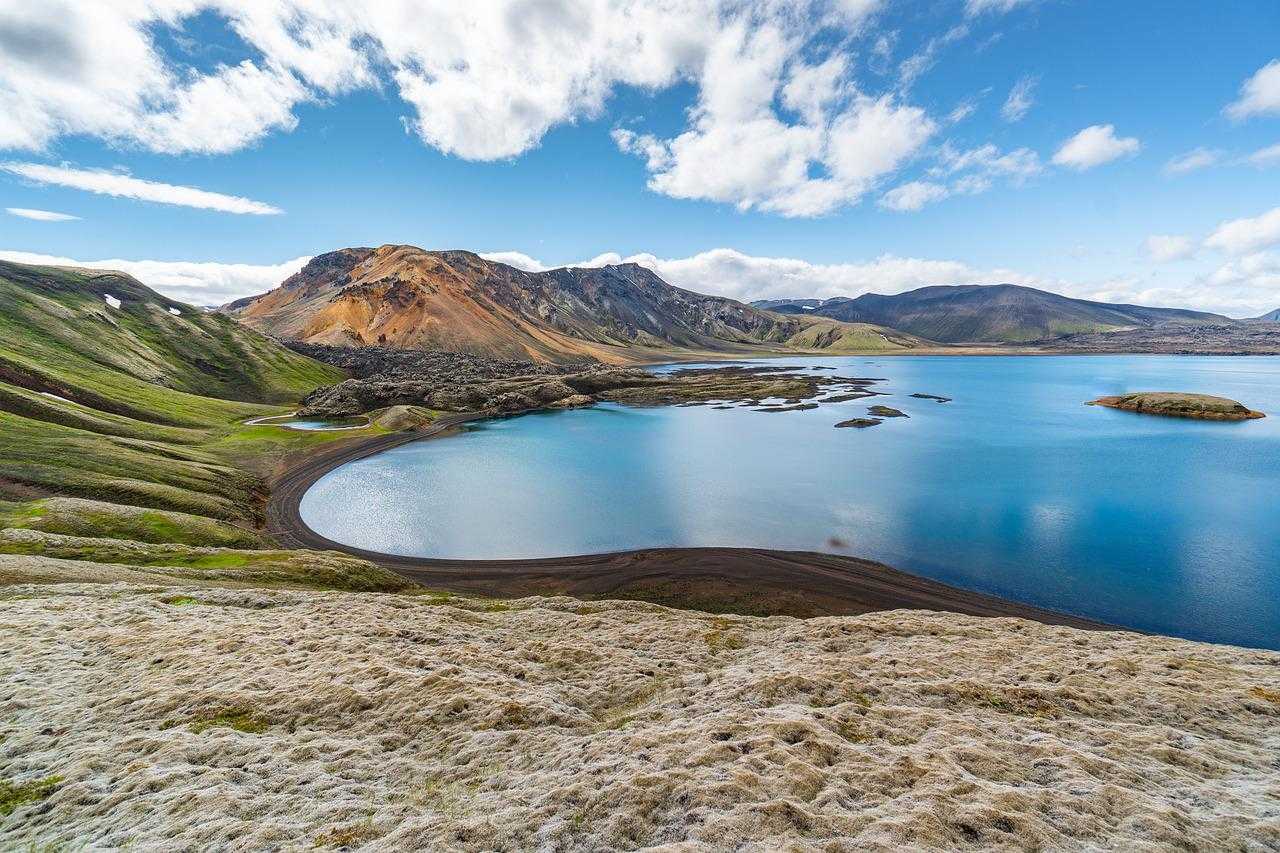
Best Time To Visit Iceland
What is the warmest month in Iceland?
When can I see the Northern Lights in Iceland?
The Northern Lights are visible from late September to early April, with the best chances during the darkest winter months.
Does Iceland observe daylight saving time?
No, Iceland follows Greenwich Mean Time (GMT) year-round and does not adjust for daylight saving time. This means the time remains consistent throughout the year, making it easy to coordinate plans without seasonal changes.
How does Iceland’s time compare to other countries?
Iceland is always on GMT (UTC+0). In the summer, it shares the same time as London, but in the winter, Iceland is one hour behind as the UK moves to GMT+1 due to daylight saving time.
What is the Midnight Sun in Iceland?
The Midnight Sun occurs from late May to late July, where Iceland experiences nearly 24 hours of daylight. In June, the sun barely sets, allowing for extended outdoor adventures.
How much daylight does Iceland get in winter?
During November to January, Iceland has very short days, with the darkest period in December when the sun may rise around 11 AM and set by 3 PM. This makes winter ideal for viewing the Northern Lights.
How can I check the current time in Iceland?
You can check Iceland’s current time by adding Reykjavík to your phone’s world clock or using websites like time.is for real-time updates. This is especially useful when coordinating with different time zones.
Are roads open year-round in Iceland?
Most major roads are open year-round, but some highland routes and remote areas are only accessible in summer.
What is the best season for whale watching in Iceland?
Summer, especially June to August, is the best time for whale watching.
Can I visit Iceland on a budget?
Yes, visiting during spring or autumn and booking in advance can help you save on flights and accommodations.
Does Iceland get really cold?
Iceland isn’t as cold as you might think! Thanks to the Gulf Stream, winter temperatures rarely drop below -1°C (30°F) in coastal areas, but strong winds can make it feel much colder.
When is the best time to visit Iceland?
It depends!
- For Midnight Sun & road trips? Visit in summer.
- For Northern Lights & fewer crowds? Visit in fall or winter.
For a balance of activities? Visit in spring.
How should I dress for Iceland’s weather?
Layering is key! Even in summer, Iceland’s weather changes fast, so always bring a waterproof jacket, sturdy shoes, and warm clothes.
Is March a good time to visit Iceland?
✅ Yes! March offers Northern Lights, ice caves, and longer daylight hours than mid-winter.
Read more about visiting Iceland in March.
Can you see the Northern Lights in March?
✅ Yes! March is one of the last months for good Northern Lights visibility.
Learn more about seeing the Northern lights in March.
Is it safe to drive in Iceland in March?
✅ Yes, but roads can be icy. A 4x4 vehicle is recommended, and always check road conditions.
Read more about driving in Iceland in March.
Are there still ice caves in March?
✅ Yes! Ice cave tours usually run until late March before melting.
Learn more about ice caves in March.
What should I pack for Iceland in March?
✅ Warm layers, waterproof clothing, insulated boots, gloves, and sunglasses (for snow glare).
Read more about packing for Iceland in March.
Is April still cold in Iceland?
✅ Yes, but it’s warming up! Temperatures range from 0°C to 7°C (32°F to 45°F).
Read more about Iceland April temperatures
Is it safe to drive in Iceland in April?
✅ Yes! Road conditions improve, but some Highland roads remain closed.
Is August a good time to visit Iceland?
✅ Yes! August has long daylight hours, warmer weather, and all roads open.
Is it safe to drive the Ring Road in August?
Yes! August is one of the best months for a self-drive road trip.
Is October a good time to visit Iceland?
Yes! October is great for Northern Lights, autumn landscapes, and fewer crowds.
What is the weather like in Iceland in October?
Cool and unpredictable. Temperatures range from 0°C to 7°C (32°F to 45°F).
Is November a good time to visit Iceland?
Yes! It’s great for Northern Lights, ice caves, and fewer tourists.
How cold is Iceland in November
Temperatures range from -1°C to 4°C (30°F to 39°F).
How cold is Iceland in December?
Temperatures average between -3°C to 2°C (27°F to 36°F).
Is driving safe in December?
It can be challenging; a 4x4 vehicle or guided tours are highly recommended.
Is Reykjavik crowded in December?
Reykjavik gets busier around Christmas and New Year, but still less crowded than summer.
Is May a good time to visit Iceland?
Absolutely, with comfortable weather and fewer crowds.
How cold is Iceland in May?
Average temperatures range from 4°C to 10°C (39°F to 50°F).
Is September a good time to visit Iceland?
✅ Yes! Great weather, fewer crowds, and the start of Northern Lights season.
Can you see the Northern Lights in September?
✅ Absolutely! The Northern Lights viewing season begins in September.
Is Iceland crowded in September?
✅ Less crowded than summer months, offering a more peaceful experience.
What should I pack for Iceland in September?
✅ Waterproof clothing, warm layers, insulated boots, and a headlamp.
Are roads accessible in Iceland in September?
✅ Main roads remain open, but some highland roads begin closing late September.
Is January a good month to visit Iceland?
✅ Yes, especially for Northern Lights, ice caves, and fewer crowds.
Read more about visiting Iceland in January.
Can you see the Northern Lights in January?
✅ Absolutely! January offers peak visibility due to long, dark nights.
Read more about seeing the Northern ligths in January.
How cold is Iceland in January?
✅ Temperatures range from -3°C to 2°C (27°F to 36°F), with colder conditions inland.
Is it safe to drive in Iceland in January?
✅ Roads can be icy—renting a 4x4 and cautious driving are essential.
What should I wear in Iceland in January?
✅ Warm layers, waterproof clothing, insulated boots, gloves, and ice cleats.
Is Iceland worth visiting in February?
✅ Yes! It’s perfect for Northern Lights, snowy landscapes, ice caves, and fewer crowds.
Is it safe to drive around Iceland in February?
⚠️ It can be, but only if you have winter driving experience and check road conditions regularly.
Can you see puffins in February?
❌ No. Puffins return to Iceland in late spring (usually April/May).
Are tours available year-round in February?
✅ Yes! Ice cave tours, glacier hikes, Northern Lights tours, and geothermal spas all operate in February.
What’s the biggest challenge about visiting in February?
🌨️ The weather can change fast. Always check local weather forecasts and have flexible plans.
Is 3 days in Iceland worth it?
Yes! You can explore Reykjavík, see the Golden Circle, and even make a South Coast day trip.
How long do you need for the Ring Road?
A minimum of 6–7 days is recommended, though 8–10 days is better for a more relaxed experience.
Is it better to visit Iceland in summer or winter?
Both have unique experiences. Summer offers more daylight and easier driving, while winter brings the Northern Lights and ice caves.
For more see how to plan the perfect trip lenght in Iceland.
Things To Do In Iceland
What are the must-do activities in Iceland?
Glacier hikes, geothermal spa visits, and chasing the Northern Lights are top activities.
When is the best time to visit Iceland for activities?
Summer is best for hiking and road trips, while winter is ideal for Northern Lights and ice cave tours.
Do I need to book tours in advance?
Yes, especially for popular activities like glacier hikes and Blue Lagoon visits.
Is Iceland suitable for families?
Absolutely! Many activities, like whale watching and hot spring visits, are family-friendly.
How can I experience Iceland on a budget?
Visit during shoulder seasons, camp to save on accommodations, and focus on free attractions like waterfalls and hiking trails.
How much time should I spend in Reykjavík?
Two to three days is enough to see the main attractions, but longer stays allow you to explore more at a leisurely pace.
What is the best way to get around Reykjavík?
Most attractions are within walking distance, but bikes and scooters are also popular options.
Are there free things to do in Reykjavík?
Yes! The Sun Voyager, Tjörnin, and street art are all free to enjoy.
Is Reykjavík good for families?
Absolutely. The city’s attractions, parks, and museums offer plenty of family-friendly activities.
When is the best time to visit Reykjavík?
Summer offers long daylight hours and mild weather, while winter is great for Northern Lights and cozy indoor activities.
What are the top must-see attractions in Iceland?
The best attractions include the Golden Circle (Thingvellir, Geysir, Gullfoss), Blue Lagoon, Jokulsarlon Glacier Lagoon, Skogafoss, Seljalandsfoss, and Reynisfjara Black Sand Beach.
What unique activities can I do in Iceland?
✅ You can go glacier hiking, whale watching, ice caving, lava caving, snorkeling in Silfra, and soak in g
Is Iceland expensive to visit?
✅ Yes, Iceland is known for being expensive, but you can save money by renting a car, booking accommodation in advance, and enjoying free natural attractions like waterfalls and hiking trails.
What is the best time of year to visit Iceland?
✅ Summer (June–August) for Midnight Sun and road trips, Winter (November–March) for Northern Lights, and shoulder seasons (April-May, September-October) for fewer crowds and mixed experiences.
Do I need a 4x4 vehicle in Iceland?
✅ In summer, a regular car is fine for most roads. In winter or if visiting the Highlands, a 4x4 is necessary due to snow, ice, and rugged terrain.
What are the top things to do in Reykjavik?
Visit Hallgrímskirkja Church, Harpa Concert Hall, Perlan Museum, the Sun Voyager sculpture, and Laugavegur shopping street.
Is Reykjavik expensive to visit?
Yes, but there are free attractions like walking tours, city parks, and scenic coastal paths. Budget travelers can also visit local pools instead of the Blue Lagoon.
What is the best way to get around Reykjavik?
Walking is the best way to explore the city, but buses, taxis, and rental cars are also available.
Is Reykjavik good for nightlife?
Yes! Reykjavik has a vibrant nightlife scene, especially along Laugavegur Street, with bars, live music, and late-night parties.
Is Reykjavik good for watching the northern lights?
Yes, but the light pollution makes it harder to see them. It's best to drive outside the city to darker areas like Þingvellir National Park.
What activities are best in Iceland in April?
✅ Golden Circle, South Coast waterfalls, whale watching, and hot springs.
What should I pack for Iceland in August?
Layered clothing, waterproof gear, hiking boots, sunglasses, and a swimsuit for hot springs.
Can you drive in Iceland in October?
Yes, but roads may be icy. A 4x4 vehicle is recommended.
What should I pack for Iceland in October?
Warm layers, waterproof gear, insulated boots, gloves, and a flashlight for early sunsets.
Is it safe to drive in Iceland in November?
It can be challenging. A 4x4 is highly recommended, and some roads may be closed.
What should I wear in Iceland in November?
Thermal layers, waterproof winter jacket, snow boots, gloves, hat, and a scarf.
What are Icelandic Christmas markets like?
Cozy, festive, and featuring handmade gifts, foods, and traditional treats.
Are Icelandic roads accessible in May?
Yes, main roads are clear but some mountain roads remain closed until June.
What is the official language of Iceland?
Icelandic (Íslenska) is the official language used in all legal, political, and educational systems.
Do most Icelanders speak English?
Yes—over 90% of Icelanders are fluent in English, especially in cities and tourist areas.
Can I visit Iceland without knowing Icelandic?
Definitely. English is widely spoken and understood across the country.
Is Icelandic hard to learn?
It can be. Icelandic has complex grammar and pronunciation, but locals are very supportive of learners.
What other languages are spoken in Iceland?
Common immigrant languages include Polish, Tagalog, Lithuanian, and Danish (taught in schools).
Can I drive the entire Ring Road in 3 days?
It’s technically possible, but you’ll miss most of the scenery. 7+ days is strongly recommended. See more about the Ring Road in Iceland.
Is the Ring Road open in winter?
Yes, but parts may close due to weather. Always check road.is before heading out.
Do I need a 4x4 to drive the Ring Road?
Not in summer. In winter, 4x4 is strongly advised, especially for North/East Iceland.
What’s the best direction to drive the Ring Road?
Either works. Many go counterclockwise to start with South Coast highlights.
What’s the best time of year to visit South Iceland?
Summer (May–Sept) for best road access, long days, and full tour availability. Winter (Nov–March) is magical for snow and Northern Lights but requires caution.
Can I do South Iceland in a day trip from Reykjavik?
Yes, but only for the western portion (Golden Circle + Seljalandsfoss). For full South Coast experience, stay at least one night.
Is it safe to drive in South Iceland in winter?
With preparation and a 4x4 vehicle, yes—but always check weather conditions and road closures.
What are the best things to do in North Iceland?
Top experiences include whale watching in Húsavík, soaking in Mývatn Nature Baths, visiting Dettifoss and Goðafoss waterfalls, and exploring volcanic landscapes around Lake Mývatn.
Is North Iceland worth visiting?
Absolutely! It’s less crowded than the South, offers unique landscapes, and is home to incredible wildlife and geothermal activity.
How many days do I need in North Iceland?
Ideally 3–5 days, especially if visiting Akureyri, Mývatn, Dettifoss, and doing activities like whale watching.
What’s the most popular thing to do in West Iceland?
Driving the Snæfellsnes Peninsula and visiting Snæfellsjökull National Park are top highlights.
Can you do West Iceland as a day trip from Reykjavik?
Yes — Borgarnes and Reykholt are great for short trips. Snæfellsnes requires a full-day or overnight.
Are there any hot springs in West Iceland?
Yes — Krauma Baths, near Deildartunguhver, is one of the best geothermal spas in Iceland.
What’s the best time to visit West Iceland?
Summer is ideal for driving, hiking, and full access. Winter is quieter and great for spa visits and Northern Lights.
What are the top things to do in East Iceland?
Visit Seyðisfjörður, hike to Hengifoss, explore Hallormsstaðaskógur, soak at Vök Baths, and drive the scenic Eastfjords.
Where’s the best place to stay in the east?
Egilsstaðir is the largest town and has great access, but Seyðisfjörður, Djúpivogur, and Borgarfjörður Eystri are more scenic.
Is it easy to drive in East Iceland?
In summer, yes. In winter, some roads may be icy or temporarily closed — always check road.is.
Things To See In Iceland
What are the must-see attractions in Iceland?
Highlights include Gullfoss Waterfall, the Blue Lagoon, Þingvellir National Park, and Reynisfjara Black Sand Beach.
Is Iceland good for a short visit?
Yes! Even a few days are enough to see major attractions like the Golden Circle and Reykjavík.
When is the best time to see Iceland’s natural wonders?
Summer offers accessibility to most sites, while winter is ideal for Northern Lights and ice cave tours.
Can I visit Iceland on a budget?
Yes, by visiting in the shoulder seasons (spring or autumn) and taking advantage of free natural attractions.
Do I need a guide to explore Iceland?
While many attractions are self-guided, activities like glacier hikes and ice cave tours require professional guides for safety.
What is the best time of year to visit Reykjavík?
Summer offers long daylight hours and mild weather, while winter brings the chance to see the Northern Lights and enjoy cozy cafes.
How long should I spend in Reykjavík?
Two to three days is usually enough to see the main attractions, but you can always spend more time if you want to explore at a leisurely pace.
Is Reykjavík walkable?
Yes! Most attractions are within walking distance, making it easy to explore on foot.
What’s the best way to get around Reykjavík?
Walking is great for downtown, but consider renting a car if you plan to visit surrounding areas or head out on day trips.
Are there any free attractions in Reykjavík?
Yes! The Sun Voyager, Tjörnin, and the street art scene are all free to enjoy.
Can I still see the Northern Lights in April?
✅ Yes, in early April, but as days get longer, it becomes harder to see them.
Are waterfalls frozen in April?
Some waterfalls may still have ice, but most are flowing heavily due to melting snow.
Can you see the Northern Lights in August?
No, because the nights are too bright. The Northern Lights season starts in September.
What wildlife can you see in Iceland in August?
✅ Puffins, whales, seals, and Arctic foxes.
Can I still see puffins in Iceland in October?
No, puffins leave Iceland in mid-August.
Can you see the Northern Lights in November?
Yes! November is one of the best months for aurora sightings.
Can you see the Northern Lights in December?
Yes, December is ideal for Northern Lights viewing.
Can you see the Northern Lights in May?
Unlikely, as nights are too bright by late May.
What wildlife can you see in May?
Whales, puffins, and numerous bird species.
Why is Iceland’s population so small?
Due to its geographic isolation, harsh natural environment, and limited early resources for large-scale agriculture or cities.
Read more about Iceland's population.
Do most people live in Reykjavik?
Yes—over 60% of Iceland’s population lives in the Reykjavik Capital Region.
Read more about the population of Reykjavik.
How many people live in Iceland in 2024?
About 387,800, according to Statistics Iceland.
Learn more about how many live in Iceland.
How many tourists visit Iceland each year?
In recent years, over 2 million tourists annually, about 5–6 times the resident population.
Read more about how many visit Iceland.
Is Iceland becoming more diverse?
Yes—immigration is rising, especially in Reykjavik, creating a more multicultural society.
More on Iceland's diversity.
What are the must-see natural sights in South Iceland?
Seljalandsfoss, Skógafoss, Reynisfjara, Fjaðrárgljúfur, and Jökulsárlón are top highlights.
What time of year is best to visit South Iceland?
Summer for hiking and full access; winter for ice caves and fewer crowds.
Can I visit South Iceland without a guided tour?
Yes. Renting a car offers the most flexibility, but guided tours also cover major sights.
What’s the most famous natural attraction in North Iceland?
Dettifoss, Europe’s most powerful waterfall, is the region’s top draw.
Is North Iceland good for families?
Absolutely. It’s less crowded, has accessible sights, hot springs, horse farms, and gentle hikes for all ages.
Where can I see geothermal activity in the North?
Head to Hverir geothermal area near Mývatn for bubbling mud and steam vents.
Are there good places to hike in North Iceland?
Yes—Ásbyrgi Canyon, Dimmuborgir, and parts of the Diamond Circle offer incredible short hikes.
What’s the most iconic sight in West Iceland?
Kirkjufell, often dubbed “the most photographed mountain in Iceland,” is a must-see.
Is Snæfellsjökull worth visiting?
Absolutely. It's scenic, historic, and full of hiking trails, viewpoints, and natural wonders.
What’s the best town to base yourself in?
Borgarnes is a great gateway town; Stykkishólmur and Arnarstapi are excellent for the Snæfellsnes Peninsula.
